Projects and Science
Turkmenistan
Central Asia
ABT
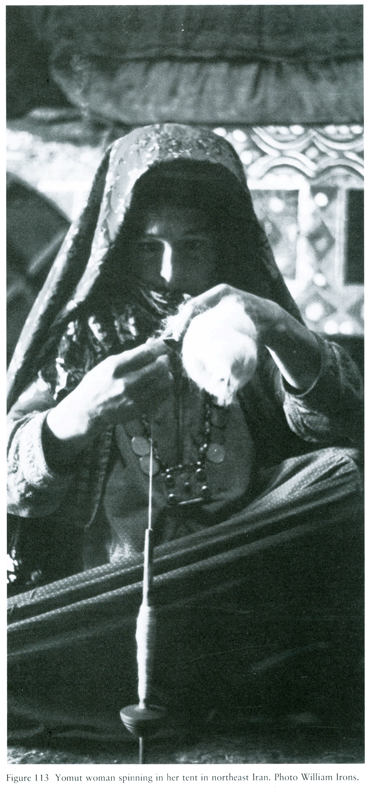
Yomut1 woman spinning in northeastern Iran. Although this spindle could be used as a drop spindle here it is supported on the floor in front of the spinner.
From: Louise W. Mackie and Jon Thompson (eds.), Turkmen Tribal Carpets and Traditions (The Textile Museum, Washington, D.C. 1980), page 225.
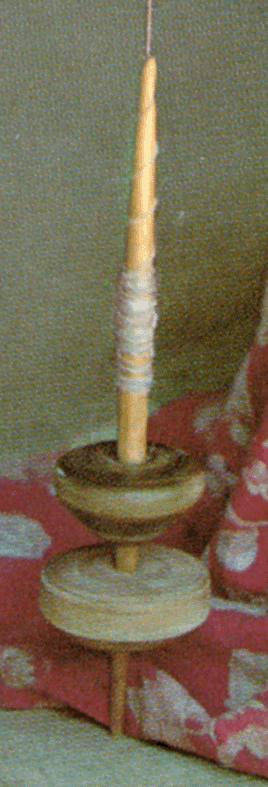
Spindle of a Turkmen woman with two whorls. It is interesting to note that here the spun yarn is not wrapped on the stick between the two whorls like on other double-whorl-spindles. Here the spindle is used supported on the floor too.
From: Roland and Sabrina Michaud, Caravan to Tartary, Thames and Hudson (London 1985), detail from image no. 59 2.
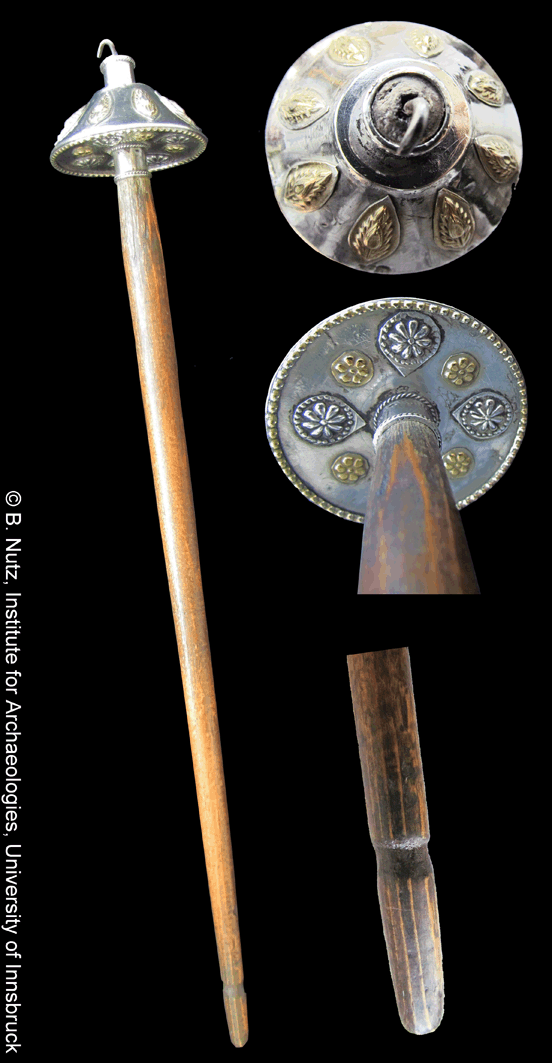
Yomut top-whorl-spindle with silver whorl and hook. A groove at the lower end of the wooden shaft indicates the occasional bottom-whorl use of this spindle. Length: 15.35"; whorl diameter: 2.16"; weight: 60.36 g. 20th century.
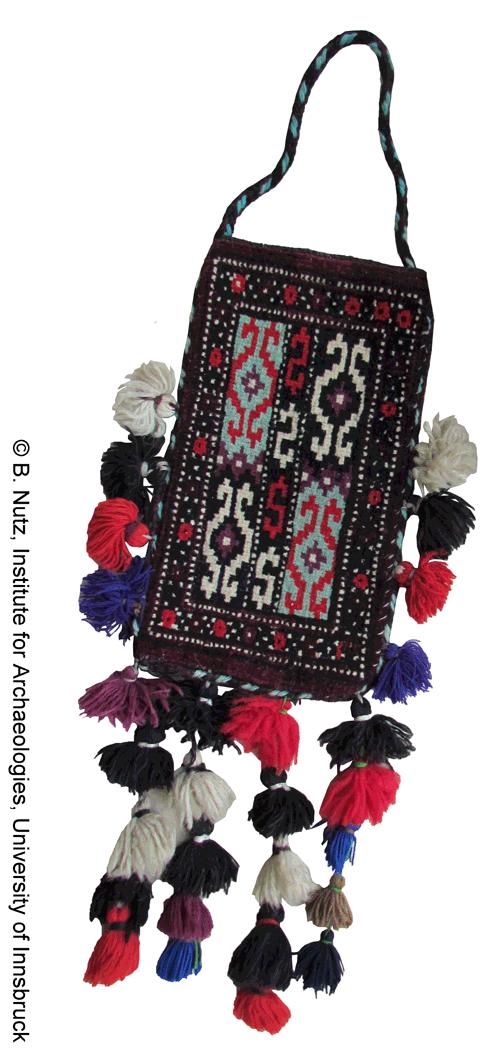
Yomut spindle bag (igsyalyk or igsalik) from Turkmenistan (one of a pair). 8.62"-14.96", 20th century.
For Turkmen wedding traditions see: Pinner, The Turkmen Wedding. In: HALI, International Magazine of Antique Carpet and Textile Art 100, 1998, 104-107.
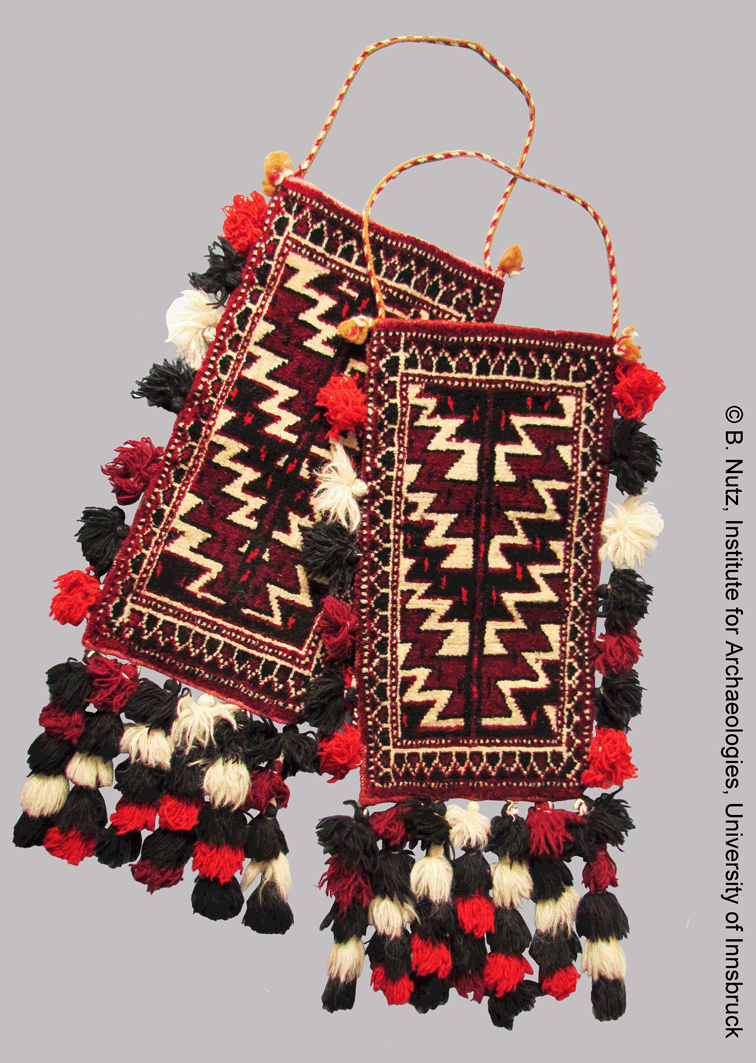
Spindle bag (igsyalik) or strut pole cover (okbash) – the never ending discussion
Were these spindle bags actually used for the storage of spindles? Well - at least they are very well suited for it, and also the name suggest this use (iğ = spindle, igsyalik = spindle bag).
So we come back to what has been already mentioned at the end of the page for Turkey. There it says:
"The discussion among the collectors of oriental carpets and fabric is sometimes quite intense, and the elongated pockets, which consist of a decorative front and back surfaces of mostly plain weave, are thought of as possible quivers, sometimes as protective covers for the ends of tent struts during migrations."
Further research reveals that those bags that ostensibly serve as protective covers for the ends of poles are not only named (okbash or ok bash) but are also designed differently and with their square cross section and extended length are much better suited for tent poles than the narrow spindle bags.
Dictionary entries as well as descriptions and illustrations of books on Turkmen carpets are listed below and it is left up to the readers to decide. Ultimately it is solely the decision of the owner to store spindles in a spindle bag or not.
Dictionary entries
Igsyalik: Small bag for a spindle
Okbash: Small pouch-like bags, usually with triangular bases and often retaining long plaited cords decorated with tassels. Apparently used to cover the ends of tent strutpoles. Most old examples are attributed to the Yomut. Although at least three by the Tekke are known. There seems to be some confusion between an okbash and an igsyalyk in the literature, with the leading contemporary Soviet specialist, Elena Tzareva, describing two weavings, which in the West would be called okbash, as “igsalik”.
From: K.K. Maitra, Encyclopaedic Dictionary of Clothing and Textiles (New Delhi 2007), p. 218, 298-299.
Books on Turkmen carpets
Ok bash – strut pole cover. Textile Museum Washington D.C., Inv. Nr./Inv. no. R 37.14.1 and 1977.36.18.
Aus: Louise W. Mackie and Jon Thompson (eds.), Turkmen Tribal Carpets and Traditions (The Textile Museum, Washington, D.C. 1980), Seite/page 171.

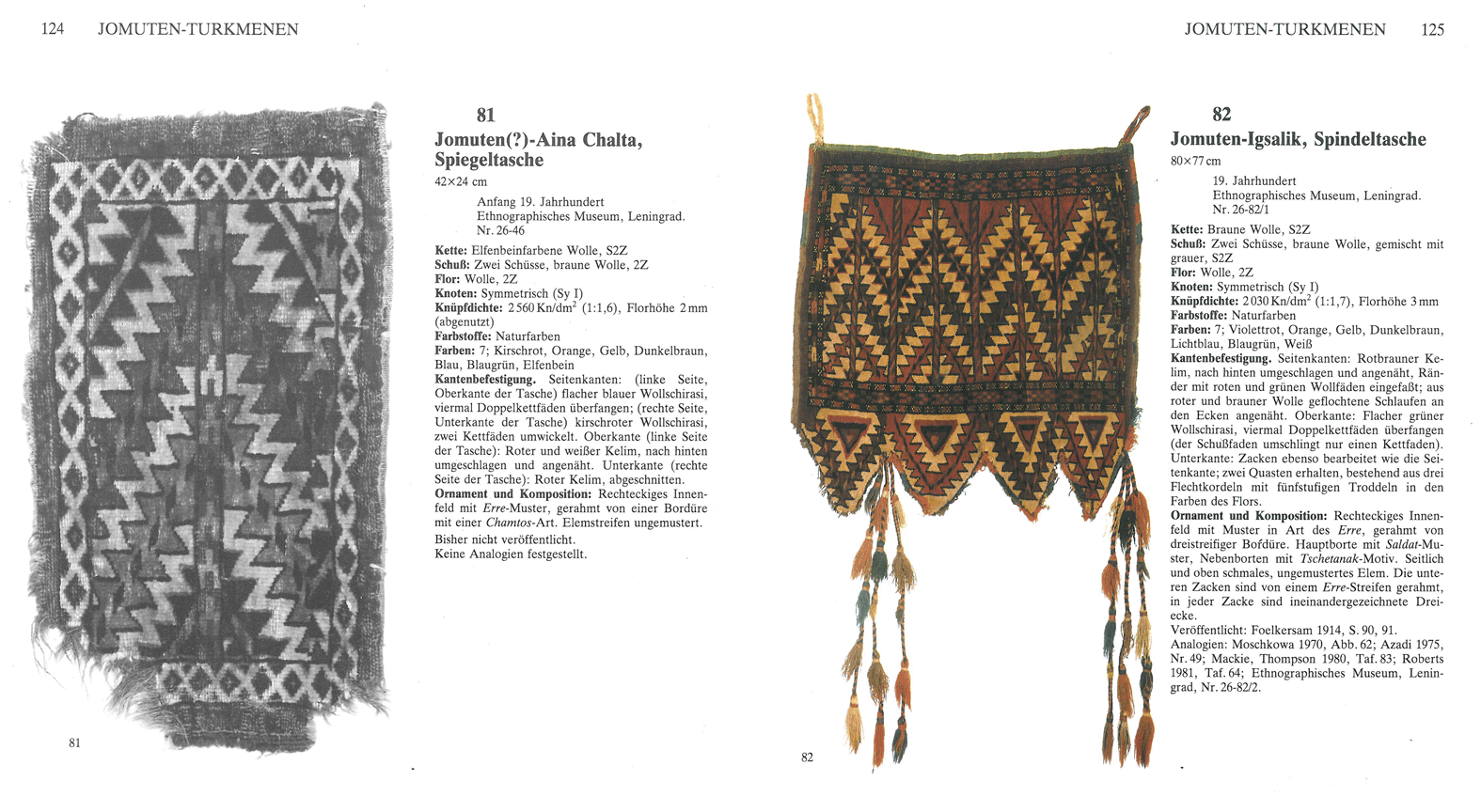
Left: This piece described as "mirror bag" corresponds to what is usually labeled a spindle bag.
Right: Here a textile otherwise referred to as okbash is addressed as spindle bag. In this case the piece was unseamed and spread out.
From: Elena Tzareva, Teppiche aus Mittelasien und Kasachstan (Leningrad 1884), Seite 124 – 125.
1 The Yomut are a Turkmen tribe which is mainly located in the west of Turkmenistan. Some however live in northwestern Iran along the coast of the Caspian Sea.
2 In the book however the entire image is erroneously described as "Turkmenian woman with her distaff". Jet no distaff can be seen in the picture. But as the book was translated from French this is probably an error of the translator. In the original French version it reads: "Femme turkmène à sa quenouille". Although the word "quenouille" translates to distaff in French it is sometimes also used for the spindle.